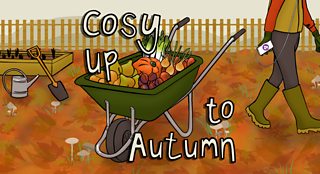Winter Ladybirds
4 Extra Debut. As ladybirds become dormant in winter, Joanna Pinnock is in Oxfordshire to examine their struggle to survive. From 2011.
It鈥檚 autumn, the leaves are falling, the temperature dropping and the nights lengthen.
This is a time when many animals begin to slow down and prepare for the long winter months ahead. The gardener's friend, the ladybird is one such animal which in late autumn begins to move into many houses as a welcome guest.
Joanna Pinnock heads to the Centre for Ecology and Hydrology in Oxfordshire where on a windy day, she joins Dr Helen Roy and PhD student Richard Comont to investigate what is happening as ladybirds come indoors.
Beginning inside Helen's house, Joanna notices ladybirds all around the windows. Ladybirds like pale walls, a reminder of their natural environment, rocky mountains with light coloured surfaces.
But recently our native ladybirds have been joined by the harlequin ladybird, a species that is more likely to be seen in the house this year. Why this is the case remains a mystery.
There are over 40 species of ladybird in Britain, with the 7 spot the most familiar. However when they come into their dormant state, parasites and fungi begin to attack the 7 spot and other ladybirds, with the winter months being the time of greatest mortality.
But new research is being carried out to see if this parasite is about to begin attacking the harlequin. Richard takes Joanna to see his experimental plots and explain why the ladybirds need a winter dormant state to survive.
Producer: Andrew Dawes
First broadcast on 大象传媒 Radio 4 in November 2011.
Last on
Broadcasts
- Sun 20 Nov 2011 06:35大象传媒 Radio 4
- Sun 6 Oct 2019 06:35大象传媒 Radio 4
- Fri 22 Oct 2021 14:30大象传媒 Radio 4 Extra
- Sat 23 Oct 2021 02:30大象传媒 Radio 4 Extra
- Sun 24 Oct 2021 15:30大象传媒 Radio 4 Extra
- Mon 25 Oct 2021 03:30大象传媒 Radio 4 Extra



